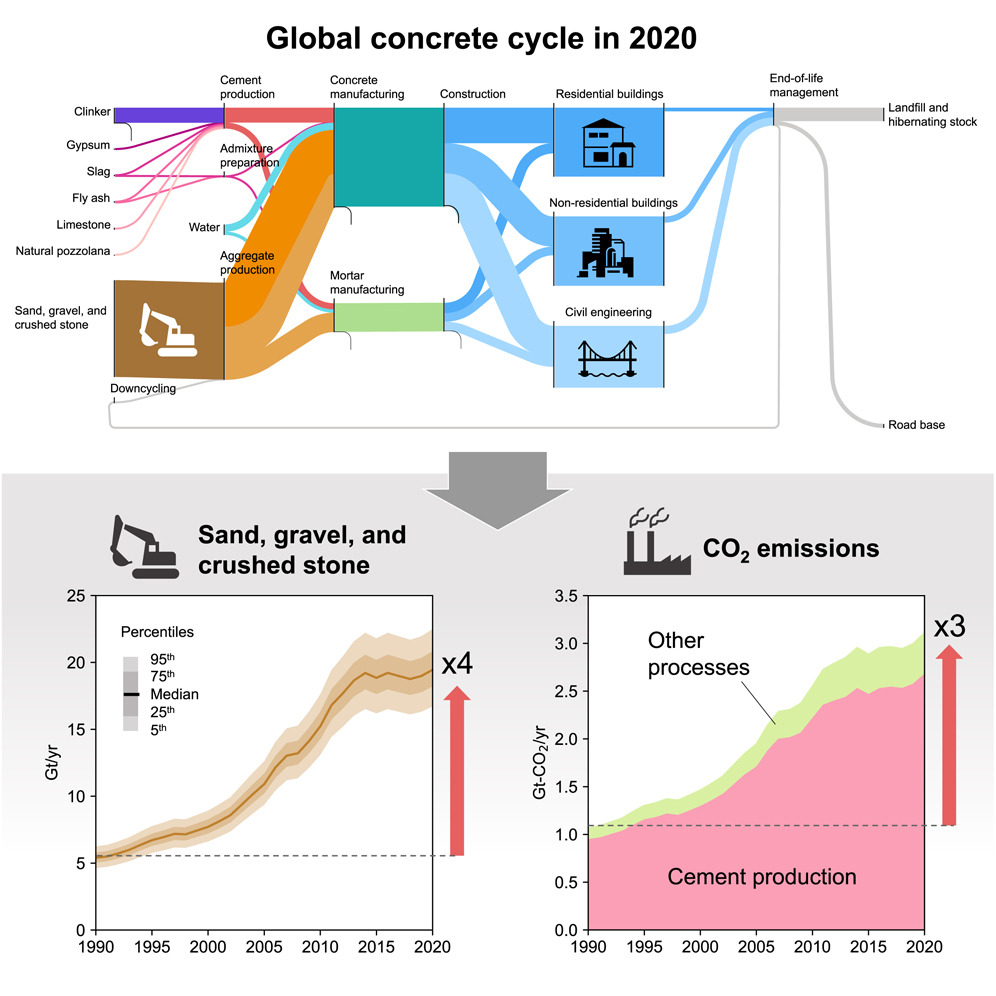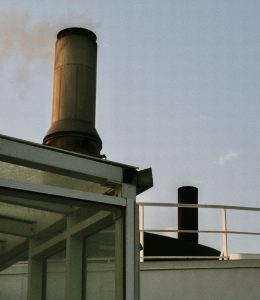Growing role of concrete in sand and climate crises
Takuma, Jonathan, Andre, and Zhi highlight the vast scale of growth in concrete demand and emissions over the last 30 years, and call for policy change to curb soaring demand in order to tackle the joint crises of sand extraction and climate change.
Concrete is the most consumed material on the planet. And such massive volumes of production correspond to significant environmental threats – in particular, climate change and destructive resource extraction.
These environmental challenges stem from the materials that are required for making concrete. Two of the key ingredients – cement and aggregates (sand, gravel, crushed stone) – are associated with major sustainability issues. Cement is one of the hardest materials to decarbonise because of the CO2 emissions that result from carbonate calcination and fuel combustion. Meanwhile, aggregates (i.e. sand, gravel, crushed stone) are the most extracted materials on the planet by weight.
But despite its vast use and accompanying environmental impacts, the extent to which concrete has been produced, stockpiled, and disposed of is poorly understood on a global scale. To address this gap in knowledge, this study brings together fragmented information on concrete’s resource requirements and climate impact across the product life cycle.
Our results show that due to the growing global demand for buildings and infrastructure over the past three decades, concrete production has increased 4x, reaching ∼26 Gt/year in 2020. The consequences of these vast production volumes include worsening sand scarcity, ecosystem destruction, and social conflict.

So far, the industry has managed to reduce CO2 emissions by ∼20% per unit of production, mainly through clinker substitution and improved thermal efficiency. Unfortunately, however, these gains have been outweighed by the sheer growth in production so that concrete-related CO2 emissions tripled between 1990 and 2020. The relative contribution of concrete to global emissions has also risen in that time from 5% to 9%.
The global concrete cycle plays a large and growing role in the impending sand and climate crises. The cement industry needs to make a change; its efforts to reduce emissions by simply streamlining production have simply not been enough in the face of such soaring demand. Our results demonstrate the difficulties of reducing resource extraction and climate contributions whilst continuing to expand cement and concrete production.
Therefore, we need to limit concrete production altogether, rather than simply taking it for granted that the industry should expand to meet any given demand. Mechanisms for reducing demand would involve changing how concrete structures are designed, constructed, used, and disposed of, so that we can achieve quality construction with less cement, extend the lifetimes of buildings and infrastructure, and reusing components from one project in another. All these savings would help the concrete industry to meaningfully contribute to addressing the sand and climate crises.
Read the full paper from Takuma, Jonathan, Andre, and Zhi: Growing role of concrete in sand and climate crises.
Photo credit: Tanner Vote













